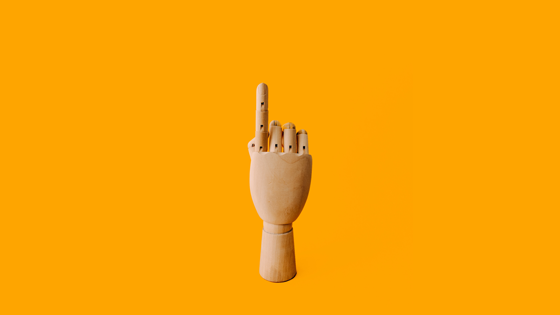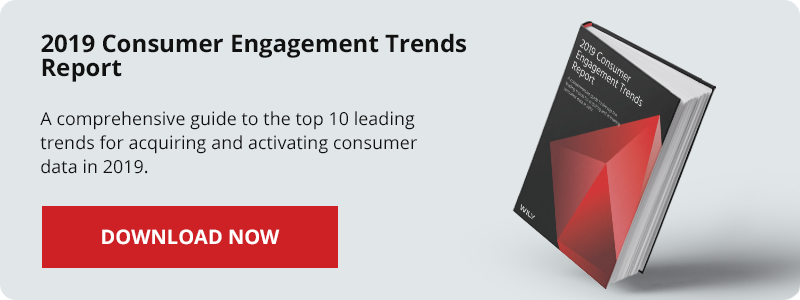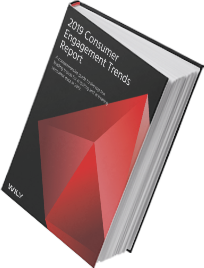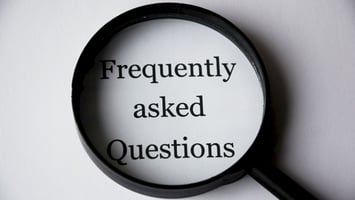Since the GDPR took effect, brands must do more to identify themselves clearly, provide contact...
The One Simple Secret to Improving Brand Engagement
 Digital communications is making it easier than ever for brands to engage consumers. However, many companies still struggle to harness digital channels to their full potential. If you want to build brand awareness and increase sales, driving consumer engagement is crucial. The best way to do this is by creating digital campaigns that audiences can interact with and activate them in real-time.
Digital communications is making it easier than ever for brands to engage consumers. However, many companies still struggle to harness digital channels to their full potential. If you want to build brand awareness and increase sales, driving consumer engagement is crucial. The best way to do this is by creating digital campaigns that audiences can interact with and activate them in real-time.
One recent survey found that 62 percent of consumers, don’t feel that companies are doing enough to recognize and reward customer loyalty under current systems. So what if firms oriented to the concept of rewards as fundamentally a social experience?
The science of human motivation tells us that the most powerful rewards are social in nature. So how can leaders tap into this powerful intrinsic motivator to reward consumers? By prioritizing engagement, you build a better experience for your current customers, while also improving communication with prospective customers.
For example:
- Incentivize interactions: This includes creating contests that offer digital rewards, e-gift cards or discounts/promotions as prizes.
- Promotional offers: For example, you can share exclusive discount codes with your followers.
- Ask for feedback: You can ask direct questions to your followers in the form of social posts, polls, or questionnaires.
When combined, these actions should improve customer engagement. So, let’s dive deeper into one tactic that is relatively new territory for marketers; digital rewards. Here we’ll explain how brands can incentivize consumers using digital rewards and drive brand engagement:
Thanking Customers: The Power of Incentives
In his groundbreaking work, Psychologist B.F. Skinner demonstrated just how powerful reinforcements can be when seeking to influence behaviour, or in marketing terms, driving brand engagement. He conditioned pigeons to perform atypical and difficult tasks, such as playing ping-pong and dancing, by systematically rewarding them for desired behaviours and negatively reinforcing undesired behaviours.
Skinner identified a number of contingencies that should be considered when using incentives to elicit behaviours. Research by Deloitte suggests businesses should pay close attention to the following three considerations, which they refer to as the three pillars of thanking customers:
- Type and amount (the “how”): The type of reward (e.g. eGift card vs. verbal acknowledgment) that the customer responds best to and its amount (e.g. size of gift vs improvement of service)
- The timing and frequency (the “when”): The optimal timing or frequency of incentives needed to keep customers loyal, while not exhausting resources; also, whether timing should be tied to behaviour (purchases) or tied to certain times in the calendar year (drip e-mails), such as holidays, or every quarter in a calendar year
- Sustainability (the “how long”): The likelihood that the chosen acknowledgment method (type, amount, and frequency) will be sustainable over time.
With this in mind, we can explore where the opportunities for digital rewards exist in the customer journey, and how marketers can put this into practice.
Engage Consumers By Rewarding Brand Loyalists
While free gifts and product discounts are a great way to drive repeat purchases, you should also consider ways to reward at every stage of your customer experience. That’s where exclusive digital incentives come into play!
If you’re running a VIP or a membership program, consider offering digital incentives to all program members. For instance, maybe members receive a monthly e-mail with exclusive discount codes. This is a great way to attract new members and will engage your members long-term. By digitizing this process you From here, make your program more valuable by offering better benefits to members of the higher tiers. This could include an increased percentage off each purchase, more points earned per purchase, or free gifts.
This behaviour will directly feed your program engagement rates, keeping your customers happy and your rewards program thriving.
 Mark Special Events with Automated Incentives
Mark Special Events with Automated Incentives
If you’re collecting data about your consumers, you may have access to information such as their birthday. Although a “Happy Birthday” e-mail is a nice thought, it won’t do much to drive consumer behaviours. The truly memorable moments come from meaningful, tangible, and personalized acts of generosity. So why not take this time to re-engage your consumers with digital rewards such as a $10 e-gift card or 10% off when they make a purchase on their birthday or birth month. This shows a little more thought, and although beneficial to the consumer, is likely to benefit your business just as much.
You can also take it a step further, and personalize the message to recommend specific products based on their purchase history. The opportunity to get a discount on their most loved products helps to drive consumers into your store when they may otherwise not have. It also keeps customers interested in what your brand (and program) have to offer them in the future.
Additionally, holidays are a great time to incentive sales with digital rewards.
Social and Online Sales
Before you earn someone’s business, there are more and more likely to Google you first. They want to research your services, read reviews, and see how active you are online. Many potential customers may pass over your business simply because you lack social trust and content. That’s why there is so much value behind customers who like, share, and write positive reviews for your business. By rewarding customers who engage with you online, you are powering a network of brand ambassadors who are essentially driving new business your way.
Brand Engagement Begins and Ends With the Customer
According to Deloitte, the timing of an acknowledgment can sometimes be more important than the actual form of that acknowledgement. For it to be effective, research suggests that it needs to be a response—or reaction—to a specific action.
Researchers say that any reaction (response) is better than no reaction, as long as it is contingent upon (or a reaction to) the individual’s behaviour. People like to repeat behaviours that generate reactions, even if the reactions are negative or not useful; the mere presence of a reaction makes the corresponding behaviour more engaging. This phenomenon is known as the mere-reaction effect, and beneath it lies an important cognitive bias, the illusion of control. Humans routinely demonstrate a desire to have control over their environment and to exercise control where opportunities to do so exist. In essence, to seek a reaction is to seek information about one’s power in controlling something. The information value is in the presence of the response itself vs. the content of the response.
Therefore, it is up to marketers to leverage this psychology and create opportunities by responding to consumer behaviour using digital rewards. In turn, this will enable continuous brand engagement, keeping consumers coming back time and time again.
Check out these great examples from brands that are harnessing digital incentives to engage consumers.
White Paper: Consumer Engagement Trends Report
Companies connect data and content to deliver on the notion of personalization. This report assists brand marketers and agencies looking to engage consumers in the digital-first era. It outlines 10 emerging trends and technologies that marketers need for personalizing communications along the customer journey.
WHAT’S INSIDE:
- The Value of Data-Driven Creatives
- 5G and Mobile-First Marketing
- Leveraging The Internet of Things (IoT)
- Experience-Driven Marketing
- Plus, So Much More!





